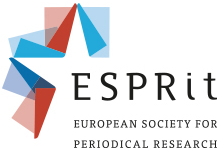Call for Papers: The Configuration of the Spanish Public Sphere, XVIII-XXI centuries
This symposium aims to establish a dialogue among different periods and aspects of the above-mentioned subject in order to arrive at a fuller understanding of the workings of the public sphere in the Spanish-speaking world in the past few centuries. The symposium will be held at the University of Warwick on 22 June 2015.
Proposals are due 16 March 2015. For more information and proposals, send an e-mail to This email address is being protected from spambots. You need JavaScript enabled to view it..
